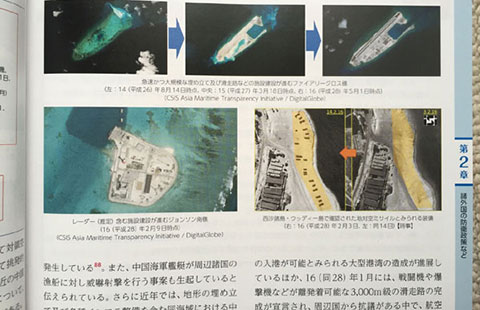Earthquake 'catastrophic' for unique New Zealand marine ecosystem
WELLINGTON - Huge mudslides caused by the 7.8-magnitude earthquake in New Zealand in November have wiped out vast tracts of one of the world's richest underwater ecosystems, scientists said Monday.
The Nov 14 quake, which killed two people on land, had destroyed any signs of organisms living in the seabed of the Kaikoura Canyon, off the northeast coast of the South Island, said the National Institute of Water and Atmospheric Research (NIWA).
NIWA scientists had undertaken two research trips to the canyon this year and discovered mudslides had occurred at its head, sending mud and debris into the canyon's central channel.
NIWA marine geologist Dr. Joshu Mountjoy led a team in January to map the offshore faults ruptured when the earthquake happened.
He compared maps of the canyon rim made in 2013 with what he saw last month.
"In 2013 everything at the head of the canyon was smooth and draped in mud. Our new data shows that the earthquake resulted in a huge slipping event. Almost every part of the upper slope had mud removed from it," Mountjoy said in a statement.
The maps made last month revealed the features of the upper slopes of the canyon in far greater detail, with large valleys and ridges once filled with mud, now completely cleared.
The amount of debris that cascaded through the canyon was massive, said Mountjoy.
Ten years ago scientists from NIWA and the United States surveying the same area found the canyon had one of the highest volumes of organisms living in the mud known anywhere in the world.
"It was about 100 times higher than anything reported anywhere else for that kind of seabed. There was an extraordinary amount of life living in the bottom of the canyon which we think was a consequence of the very high marine productivity of the whole region," said Mountjoy.
The results of that survey contributed to the area becoming a marine reserve.
"We surveyed exactly the same area we did in 2006 and, while fish were still found in the area, this time didn't record evidence of a single organism living on or in the seabed over a stretch of nearly 6 kilometers of seabed -- nothing," he said.
"It was quite sobering, and a catastrophic event for the ecology of the canyon."
Previously the seabed was covered with burrows, tracks, pits and mounds made by seabed animals, but it was now smooth and barren.
While fish and whales were still observed in the area, the consequences for these predators were not yet known.
"We suspect that events like this might happen every few hundred years in the Kaikoura Canyon. It will be very interesting to follow what happens from here, and I will be highly surprised if it doesn't regenerate," he said.


























